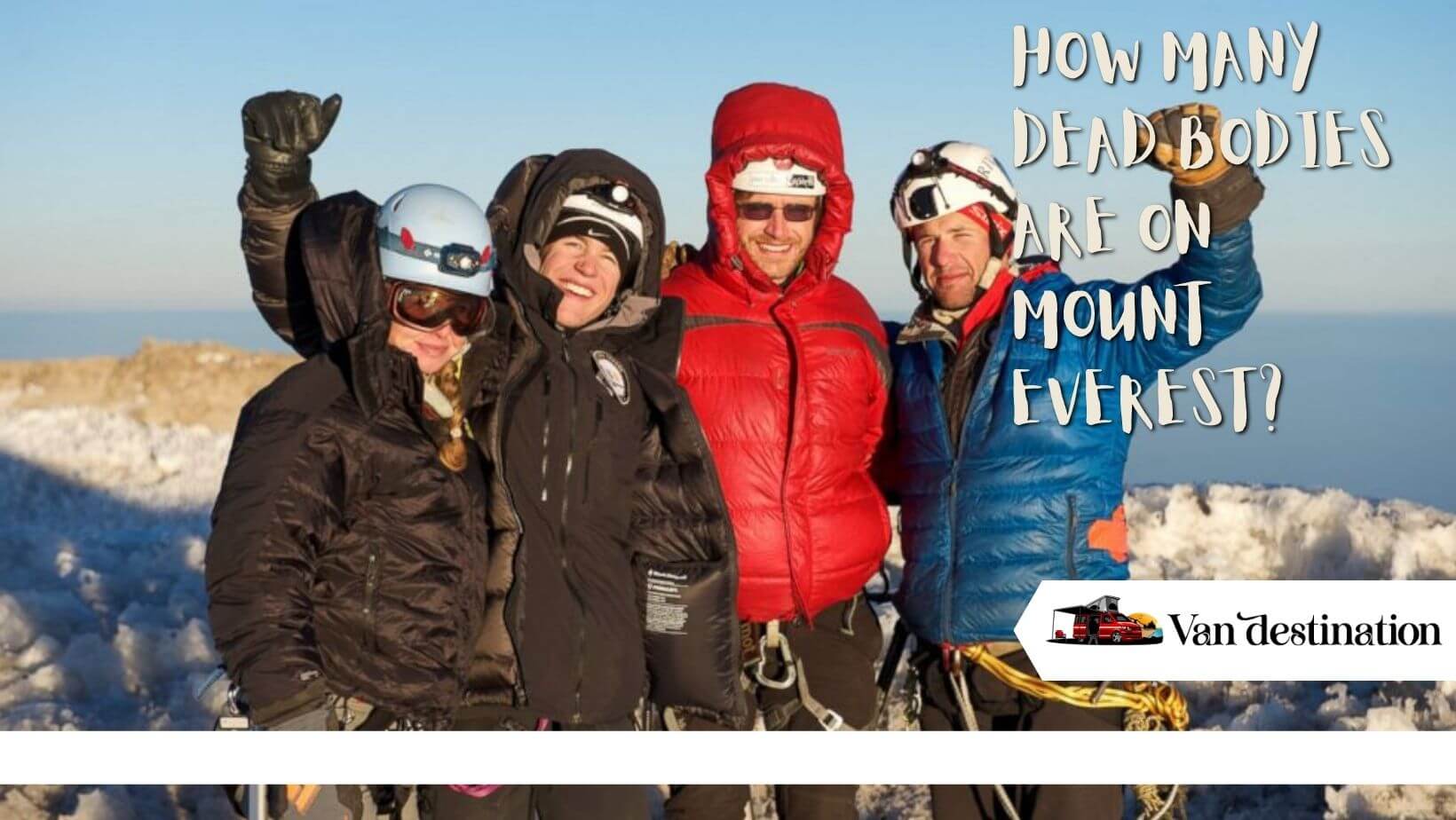How Many Dead Bodies Are on Mount Everest?

Mount Everest, standing at a majestic height of 8,848 meters (29,029 feet), has captivated explorers and climbers for decades. Its allure lies in the triumph over nature’s greatest challenge, pushing the limits of human endurance and determination. However, reaching the summit is not without peril. In this article, we will discuss how many dead bodies are on Mount Everest.
The Allure of Mount Everest
The risks and dangers
Scaling Mount Everest presents numerous risks and dangers that climbers must contend with. Extreme weather conditions, avalanches, high-altitude sickness, and unpredictable terrain make it an arduous and treacherous journey. Despite advancements in equipment and safety measures, the mountain demands respect and careful planning.
The issue of dead bodies
Tragically, the unforgiving nature of Mount Everest has claimed the lives of many climbers throughout history. These fatalities, often occurring in the “Death Zone” above 8,000 meters (26,247 feet), have left behind a haunting legacy. Dead bodies scattered across the mountain have become a somber reminder of the risks involved in attempting to conquer Everest.
Also Read: How Long Does it Take To Hike Mount Everest
The estimation challenge
Determining the exact number of dead bodies on Mount Everest is a daunting task. Due to the harsh conditions and vast expanse of the mountain, accurate documentation is difficult. Estimates vary, and the count includes both those who perished while attempting the climb and bodies discovered from previous expeditions.
Factors affecting body preservation
Several factors influence the preservation of bodies on Mount Everest. Extreme cold temperatures, low oxygen levels, and strong winds slow down decomposition. Some bodies become mummified, frozen in time, while others are partially buried under snow and ice. These conditions create a macabre landscape where the deceased lie entombed in eternal rest.
The impact on climbers
Encountering dead bodies while ascending Everest has a profound psychological impact on climbers. The sight of these reminders of mortality can evoke fear, grief, and reflection on one’s mortality. It serves as a stark reminder of the immense risks and sacrifices involved in pursuing the summit.
Ethical considerations
The presence of dead bodies on Mount Everest raises ethical questions. Recovering and transporting bodies from the treacherous terrain is an incredibly challenging and risky endeavor. Balancing respect for the deceased with the safety of the living is a complex moral dilemma that authorities and climbers grapple with.
Efforts to clean up the mountain
Recognizing the need to address the issue of dead bodies on Mount Everest, efforts have been made to clean up the mountain. Cleanup expeditions, comprised of skilled mountaineers and Sherpas, have been organized to remove trash, and debris, and recover human remains. These initiatives aim to restore the sanctity of the mountain and preserve its natural beauty.
The Future of Mount Everest
As interest in climbing Mount Everest continues to grow, it is essential to address the impact on both the environment and human life. Stricter regulations, improved safety protocols, and sustainable practices are crucial to ensure the preservation of this iconic peak for future generations. Balancing the thrill of the climb with responsible stewardship is paramount.
Conclusion
Mount Everest, a symbol of human endurance and determination, carries a haunting legacy of lives lost in pursuit of its summit. The exact number of dead bodies on the mountain remains uncertain, but their presence serves as a somber reminder of the risks and sacrifices involved. It is imperative that climbers, authorities, and the global community work together to ensure the preservation and sanctity of this natural wonder.
Also Read: How Long Does It Take To Climb MT Everest
FAQs
Q1: Are there any records of people dying on Mount Everest?
Yes, numerous records document the fatalities that have occurred on Mount Everest throughout history. The mountain’s perilous conditions have claimed the lives of many climbers.
Q2: Are the bodies of deceased climbers left on the mountain?
In most cases, the bodies of deceased climbers remain on Mount Everest. Recovering them from the treacherous terrain is challenging, and efforts to do so often pose significant risks.
Q3: How long do bodies remain preserved on Mount Everest?
The extreme cold temperatures and unique environmental conditions on Mount Everest can preserve bodies for decades. Some bodies become mummified, while others are partially buried under snow and ice.
Q4: Is climbing Mount Everest still popular despite the risks?
Despite the risks and dangers involved, climbing Mount Everest continues to be a popular endeavor for adventurers and mountaineers. The allure of conquering the world’s highest peak remains strong.
Q5: What measures are being taken to address the issue of dead bodies on Mount Everest?
Cleanup expeditions and initiatives have been organized to remove trash, and debris, and recover human remains on Mount Everest. These efforts aim to restore the mountain’s sanctity and preserve its natural beauty.



